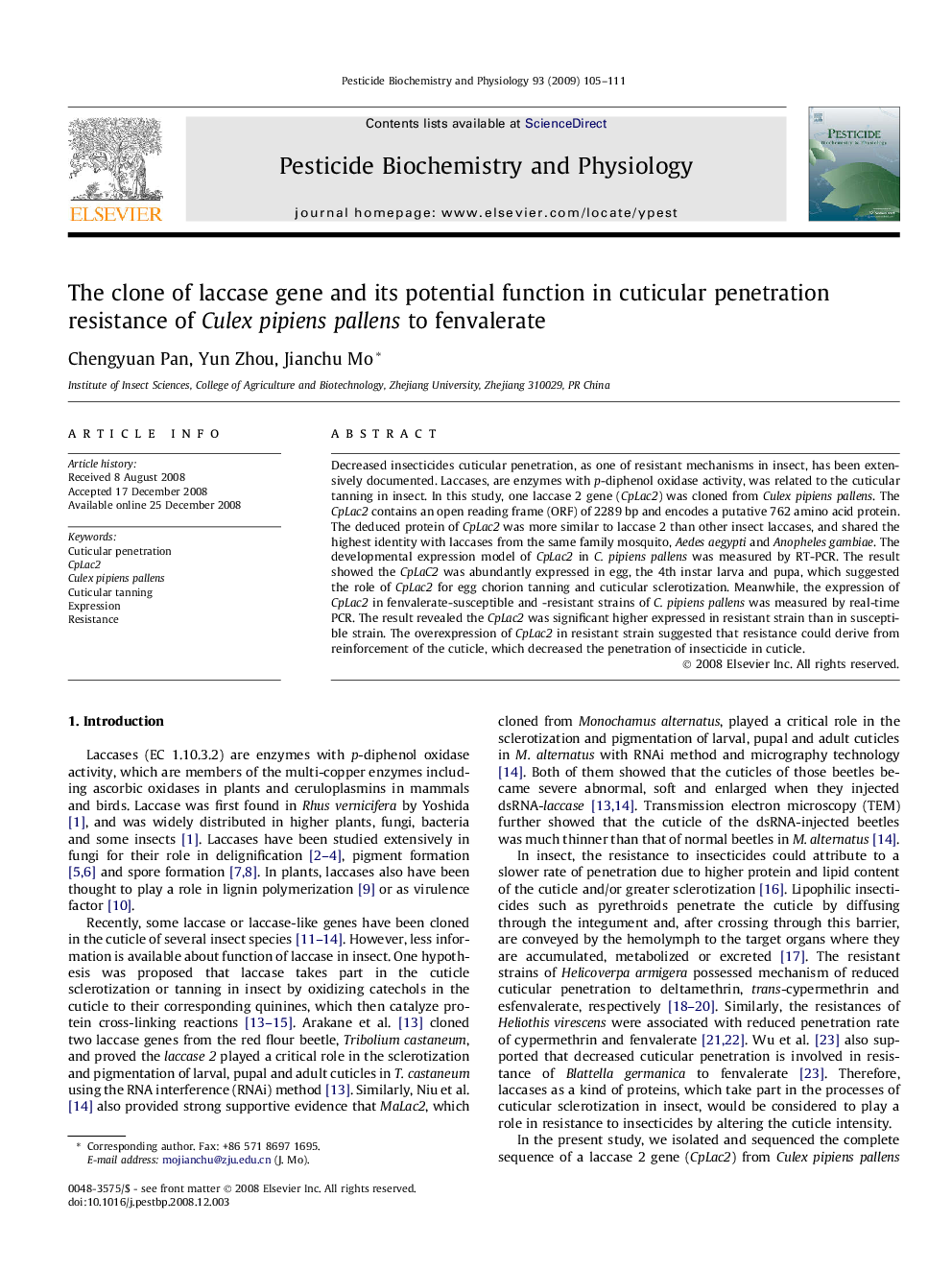| Article ID | Journal | Published Year | Pages | File Type |
|---|---|---|---|---|
| 2009871 | Pesticide Biochemistry and Physiology | 2009 | 7 Pages |
Decreased insecticides cuticular penetration, as one of resistant mechanisms in insect, has been extensively documented. Laccases, are enzymes with p-diphenol oxidase activity, was related to the cuticular tanning in insect. In this study, one laccase 2 gene (CpLac2) was cloned from Culex pipiens pallens. The CpLac2 contains an open reading frame (ORF) of 2289 bp and encodes a putative 762 amino acid protein. The deduced protein of CpLac2 was more similar to laccase 2 than other insect laccases, and shared the highest identity with laccases from the same family mosquito, Aedes aegypti and Anopheles gambiae. The developmental expression model of CpLac2 in C. pipiens pallens was measured by RT-PCR. The result showed the CpLaC2 was abundantly expressed in egg, the 4th instar larva and pupa, which suggested the role of CpLac2 for egg chorion tanning and cuticular sclerotization. Meanwhile, the expression of CpLac2 in fenvalerate-susceptible and -resistant strains of C. pipiens pallens was measured by real-time PCR. The result revealed the CpLac2 was significant higher expressed in resistant strain than in susceptible strain. The overexpression of CpLac2 in resistant strain suggested that resistance could derive from reinforcement of the cuticle, which decreased the penetration of insecticide in cuticle.
